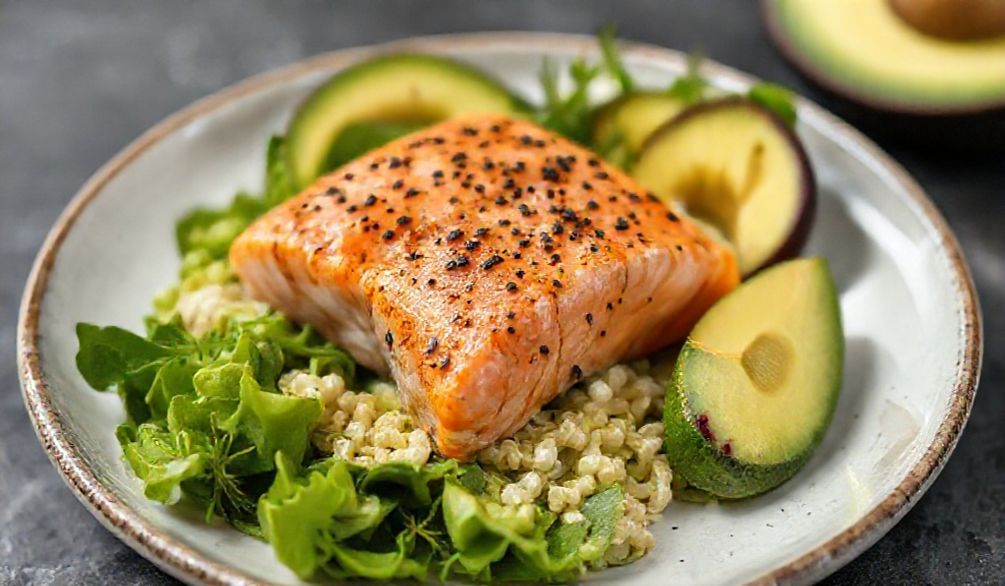Introduction: Cheap Low-Carb weight loss 2025
Are you tired of hopping from one fad diet to another—promising rapid weight loss but leaving you deprived, frustrated, and disappointed? Do you often start a diet only to quit because it doesn’t fit your lifestyle? You’re not alone.
The good news: Low-carb weight loss methods actually work—and they can be affordable, flexible, and sustainable. Low-carb diets have gained massive popularity in 2025 due to their proven ability to help burn fat, regulate blood sugar, and boost energy.
By lowering carbohydrate intake, your body shifts into fat-burning mode, creating a steady calorie deficit without extreme hunger or strict meal timing. Low-carb diets also support better hormonal balance, improved mental clarity, and long-term weight maintenance.
This guide breaks down the science of low-carb dieting, provides a step-by-step beginner framework, and offers affordable, real-world strategies to help you succeed in 2025.
Science & Benefits of Low-Carb Dieting
How Low-Carb Diets Work
When you eat carbs, your body converts them into glucose—a primary energy source. Extra glucose is stored as glycogen in muscles and the liver.
But when carbs are restricted, your body switches fuels.
Fat-Burning Mode (Ketosis)
With lower carb intake, your liver breaks down stored fat into ketones, a powerful alternative energy source for the brain, muscles, and organs.
This metabolic switch leads to:
-
Rapid fat loss
-
Controlled appetite
-
Improved metabolic health
Top Benefits of Low-Carb Diets
✔ Weight Loss
Lower carbs = lower insulin = increased fat-burning. Your body becomes more efficient at using stored fat for energy.
✔ Improved Blood Sugar Control
Very effective for preventing and managing type 2 diabetes.
✔ Higher Daily Energy
Ketones provide stable, long-lasting energy—no midday crashes.
✔ Reduced Inflammation
Helpful for chronic conditions like PCOS, arthritis, and metabolic syndrome.
✔ Mental Clarity & Focus
Many experience sharper thinking due to steady ketone-fueled brain function.
Real-Life Success Story: Sarah’s Transformation
Sarah, a 35-year-old mom of two, struggled with post-pregnancy weight. After switching to a simple low-carb plan:
-
She lost 15 pounds in six weeks
-
Felt more energetic
-
Reported clearer thinking
-
Stuck to the plan without feeling deprived
Her low-carb journey became sustainable because the diet fit her lifestyle.
Step-by-Step Guide: Getting Started With Low-Carb (2025 Version)
1. Set Your Goals
Are you aiming for weight loss, stable blood sugar, reduced cravings, or all of the above?
2. Consult a Professional
A dietitian or doctor can help determine the right carb level (20g, 50g, or 100g per day).
3. Choose Your Low-Carb Style
Popular options include:
-
Ketogenic Diet (very low carb, high fat)
-
Atkins (phased low-carb approach)
-
Paleo Low-Carb (whole-food based)
4. Calculate Macros
Typical low-carb targets:
-
Carbs: 20–100g/day
-
Protein: Moderate
-
Fat: High enough to keep you full
5. Create a meal plan
Plan affordable meals. Avoid processed keto snacks—they’re expensive.
6. Clean Your Pantry
Remove high-carb foods like bread, pasta, sugary snacks.
7. Build a Support System
Join low-carb groups, follow low-carb creators, stay accountable.
Sample Cheap Low-Carb Meal Plan (Budget-Friendly)
Breakfast
Scrambled eggs with spinach + avocado
320 calories | 5g carbs
Snack
Celery sticks + 1 tbsp almond butter
150 calories | 5g carbs
Lunch
Grilled chicken + roasted vegetables
400 calories | 10g carbs
Dinner
Baked salmon + cauliflower rice + green beans
500 calories | 10g carbs
Snack
Mozzarella cheese + cherry tomatoes
150 calories | 5g carbs
Common Low-Carb Mistakes (And How to Avoid Them)
1. Cutting Out Healthy Fats
Avocados, olive oil, nuts = essential.
2. Not Drinking Enough Water
Low-carb naturally increases water loss.
3. Ignoring Macros
Tracking helps prevent overeating or under-eating.
4. Too Little Protein
Aim for steady protein intake to maintain muscle.
Real-Life Example: Emily’s Mistake
Emily, 28, felt weak and hungry on low-carb. The cause? She avoided fats. After adding nuts, avocado, and olive oil, her energy and results improved—without cravings.
Expert Tips for Long-Term Success
✔ Listen to Your Body
Adjust carbs and fat based on hunger and performance.
✔ Sleep 7–8 Hours
Poor sleep increases cravings and slows weight loss.
✔ Stay Hydrated
Drink 2–3 liters of water daily.
✔ Be Consistent
Low-carb works best when practiced regularly.
✔ Find Support
A community boosts motivation and accountability.
Success Story: David’s 1-Year Low-Carb Journey
David, 40, lost weight, reduced cravings, and improved energy by focusing on consistency, hydration, and good sleep—not perfection.
FAQ – Cheap Low-Carb Weight Loss 2025
Q: Will I lose muscle on low-carb?
No—adequate protein protects muscle mass.
Q: Can I eat fruits and vegetables?
Yes—choose low-carb options like berries, leafy greens, and cucumbers.
Q: Will I get keto flu?
Temporary symptoms may occur but improve with electrolytes and hydration.
Conclusion
Low-carb weight loss is one of the most effective, affordable, and sustainable methods available in 2025. By understanding how it works, avoiding common pitfalls, and following a personalized plan, you can achieve long-term success.
Whether you want to lose weight, boost energy, or improve metabolic health, the low-carb approach can help you get there—without feeling deprived.
